

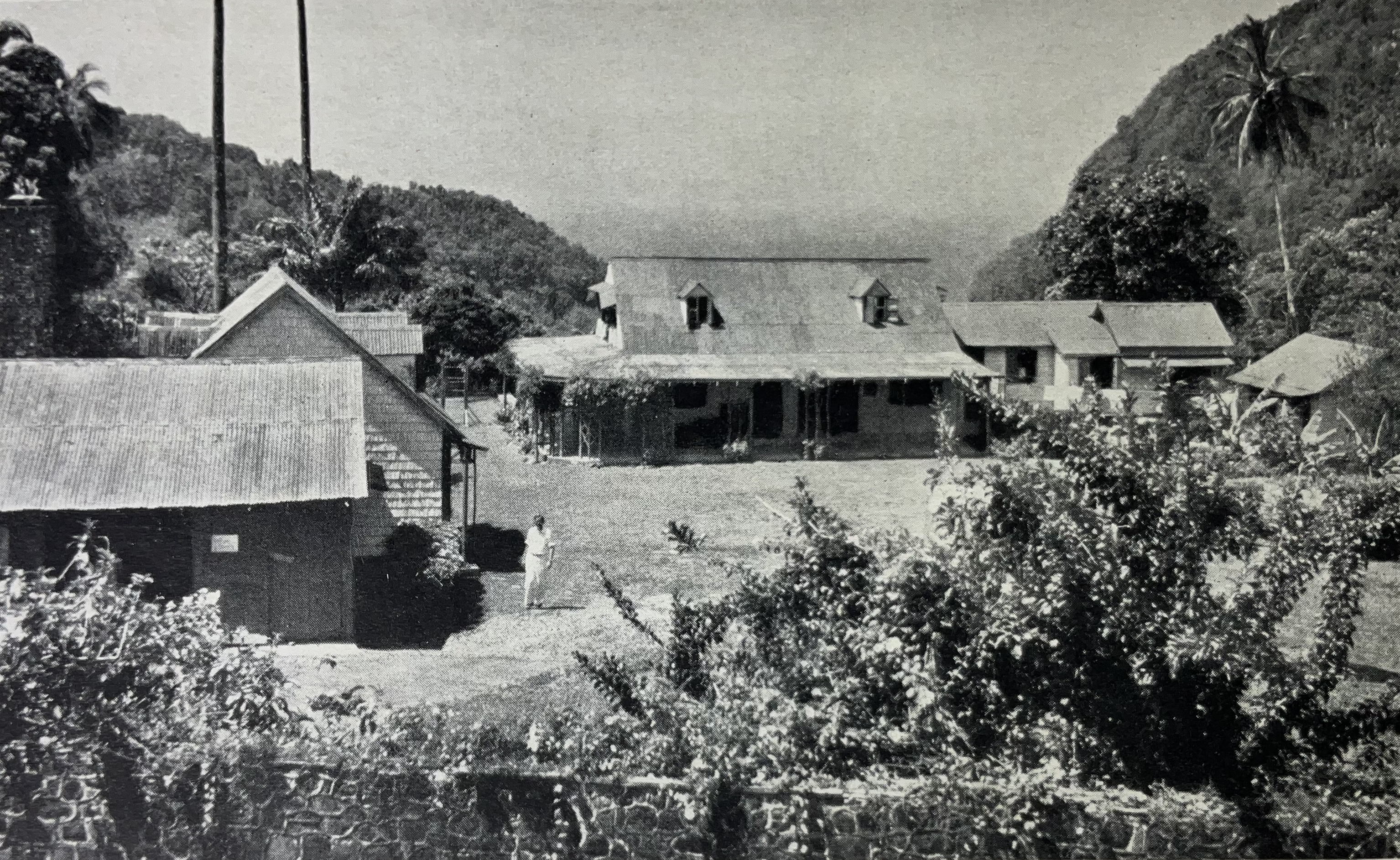
In his 1948 travel book Islands to Windward, sailor and writer Carlton Mitchell described Springfield as a lively gathering place. At that time, the estate was a modest plantation house above the Roseau Valley, not yet transformed into the larger residence and guest facilities Archbold would later build.

Mitchell recalled sailors, travelers, and locals climbing the hill to Springfield to share in John’s hospitality. On Saturday evenings the estate filled with music:
“The band assembled on the terrace after dinner. The melody was carried by a lone flutist, joined by drums stretched from wooden tubs, a triangle struck with a valve stem, guitars, a hollow bamboo ‘boom-boom,’ and a rattling tin shak-shak. The rhythm was irresistible — heads bobbed, hands clapped, and laughter carried into the night.”
This scene shows Springfield’s early role as a social and cultural crossroads — a place of music, fellowship, and welcome that laid the foundation for its later chapters in science and philanthropy.
The Springfield property has deep roots in Dominican history. Originally owned by the Bellot family, the land was later purchased in 1935 by John Dana Archbold, whose vision and philanthropy shaped much of its legacy. In the 1940s, Archbold constructed Springfield House, now preserved as a museum.
In the world that greeted Archbold, Dominica’s valleys were dense with fern and cocoa, the air alive with birdsong and the scent of rain. Writers like Rosita Forbes spoke of it as an “island in the sun,” a name that still feels true today.
Beside the main residence, Mr Archbold built the Springfield Guest House, which for many years served as one of Dominica’s most sought-after places to stay. Known for its classic atmosphere and old-world charm, the Guest House was a lively hub of community life, even hosting weddings and social gatherings. Following his passion for education and development, John Dana Archbold contributed to the creation of the Archbold Tropical Research and Education Center. The main house, however, remained private — until now.
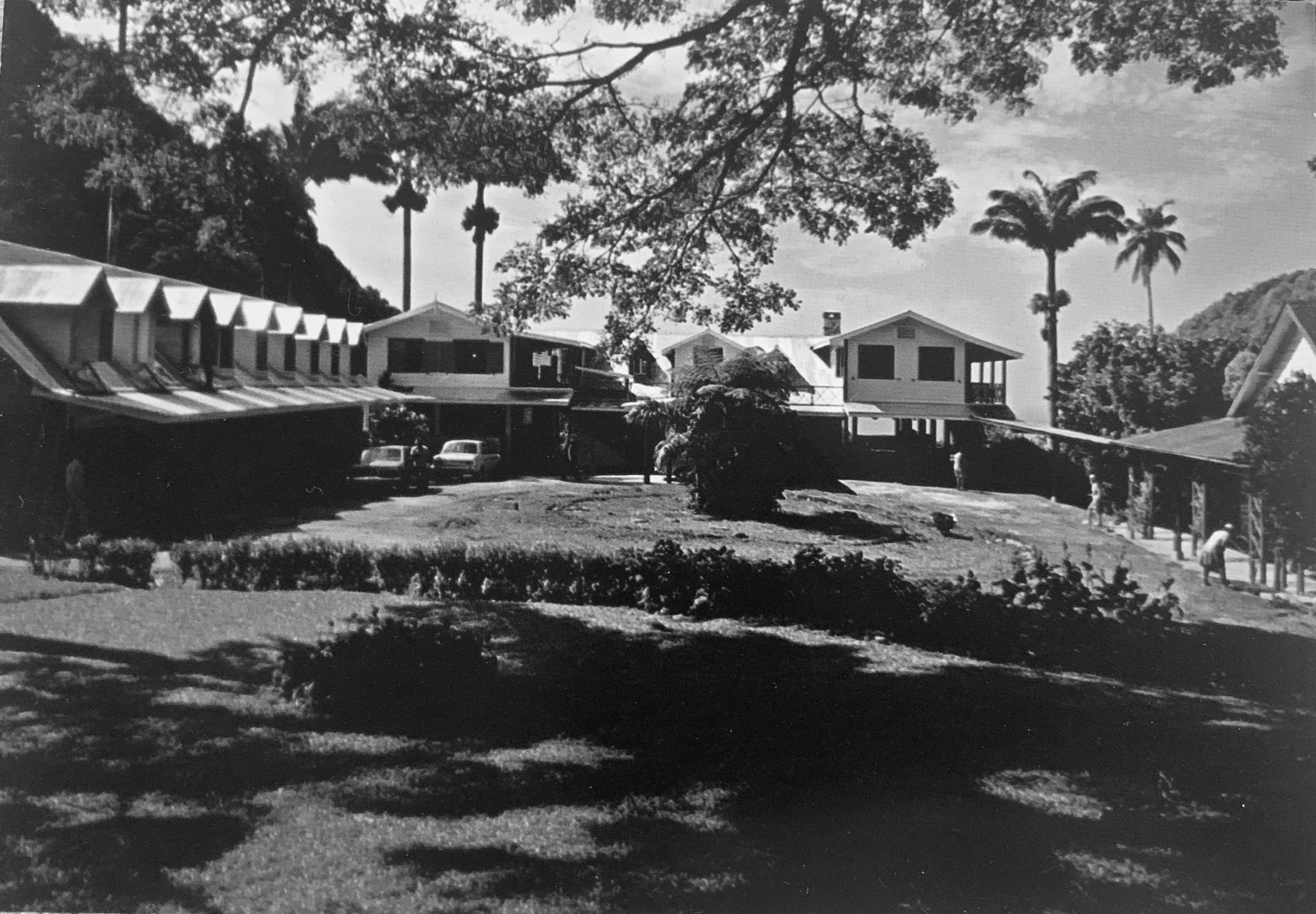
Today, Springfield House is being carefully restored and opened to the public for the first time. Visitors can view the preserved rooms, antique furnishings, art collections, and the surrounding gardens, while also enjoying a dramatic viewpoint of the Caribbean Sea over what was once a banana and grapefruit plantation.
Together, Springfield House and the Guest House are cultural landmarks whose preservation is in the national interest. They embody Dominica’s resilience, community spirit, and the intertwining of personal stories with the island’s wider history.
Mr Archbold brought and collected antique furniture — some imported, some commissioned, and many purchased from other estates. From South Chilton Estate to Kingsland House — once home to Dr. John Imray (1811–1880) — each piece carries a thread of Dominican history, reflecting both local and international heritage.
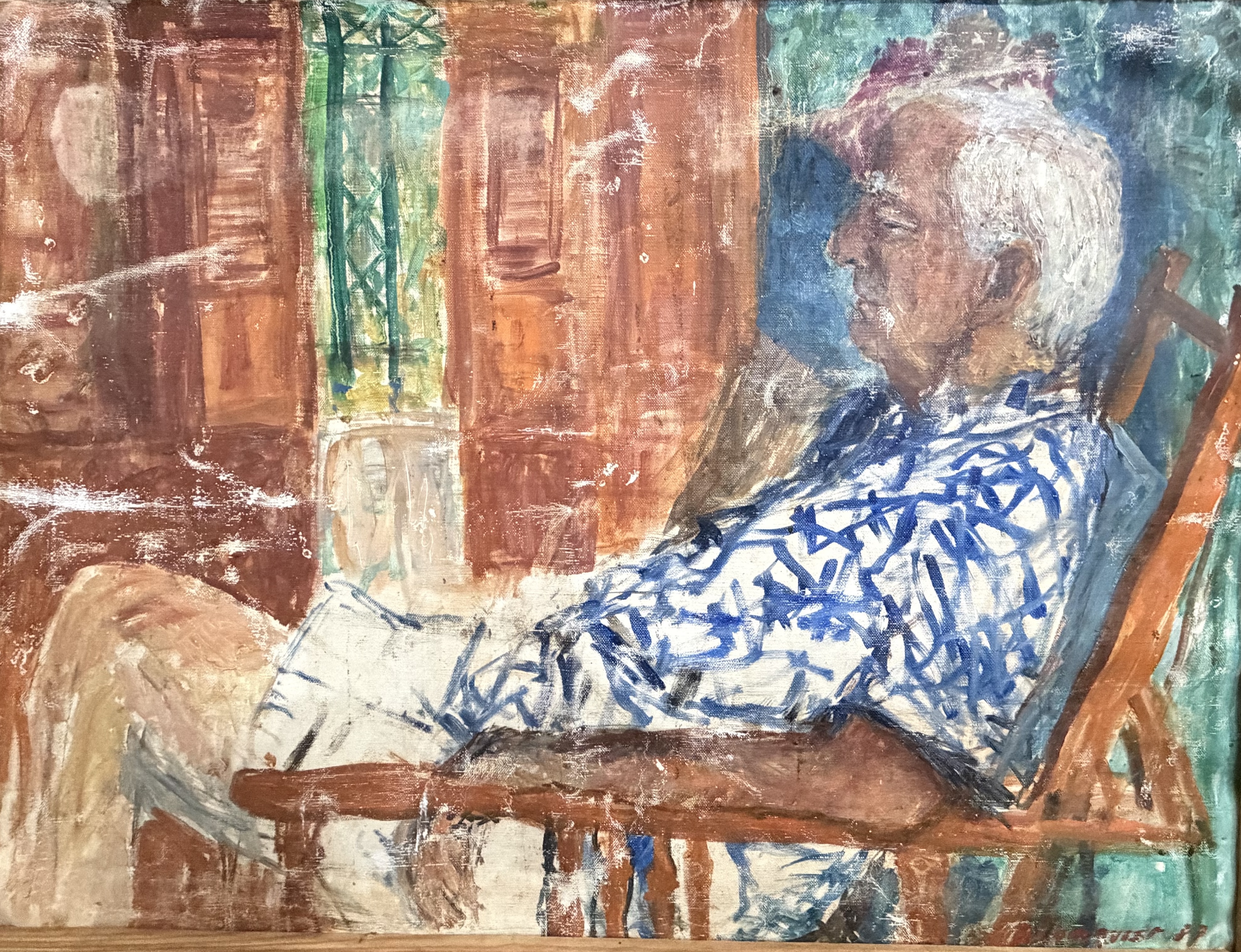
From faraway ports to the quiet hills of Dominica, Springfield was never isolated. Travelers, researchers, and families arrived with trunks full of books, linens, and dreams. Among them was John Dana Archbold, whose own belongings likely traveled in these trunks. The painting above — his portrait seated in one of Springfield’s armchairs still present in the museum — gives a human face to these journeys of exploration and exchange.
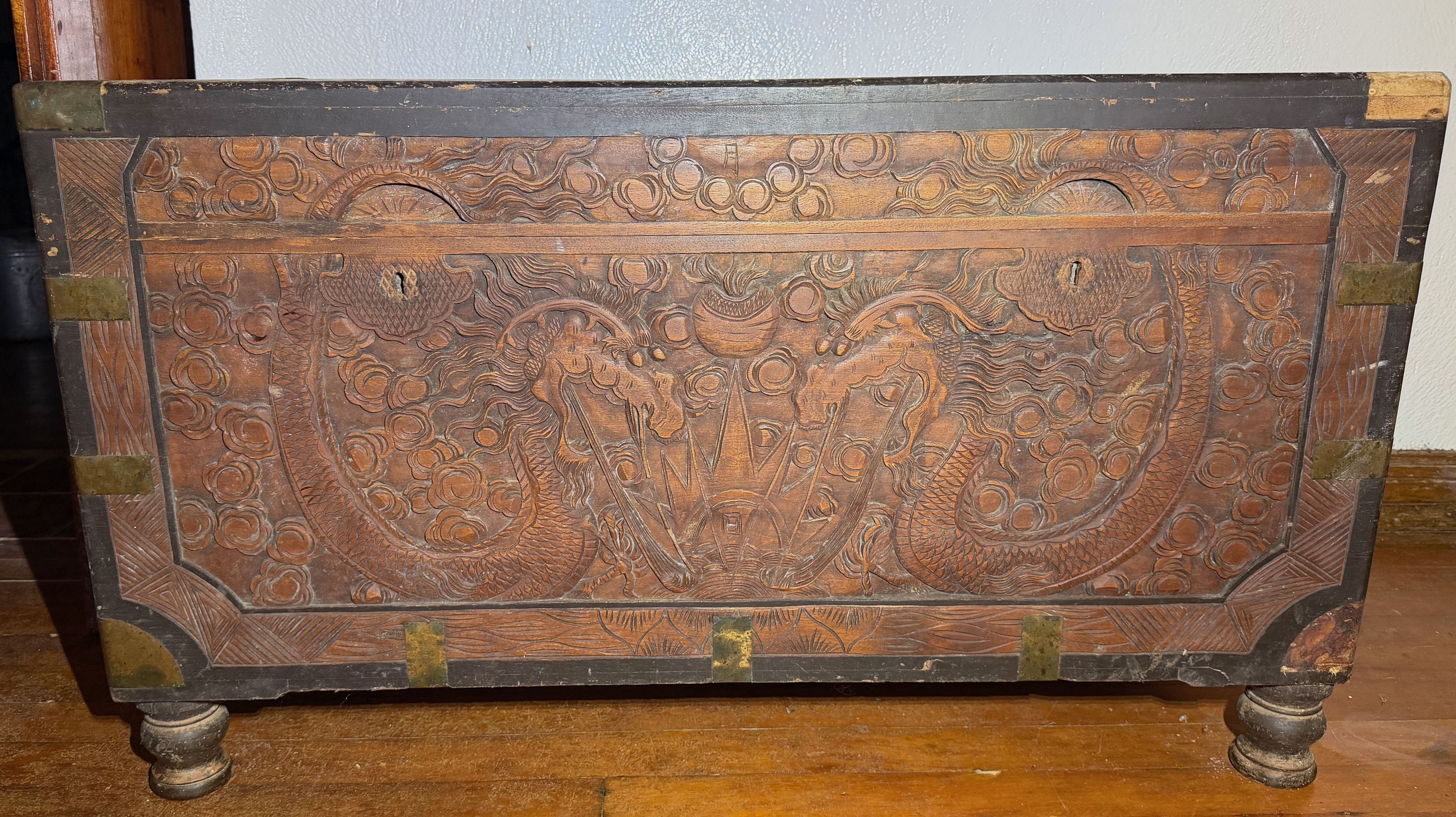
Hand-carved with dragons and clouds, this chest once carried keepsakes across the tropics — a symbol of craftsmanship and global trade.
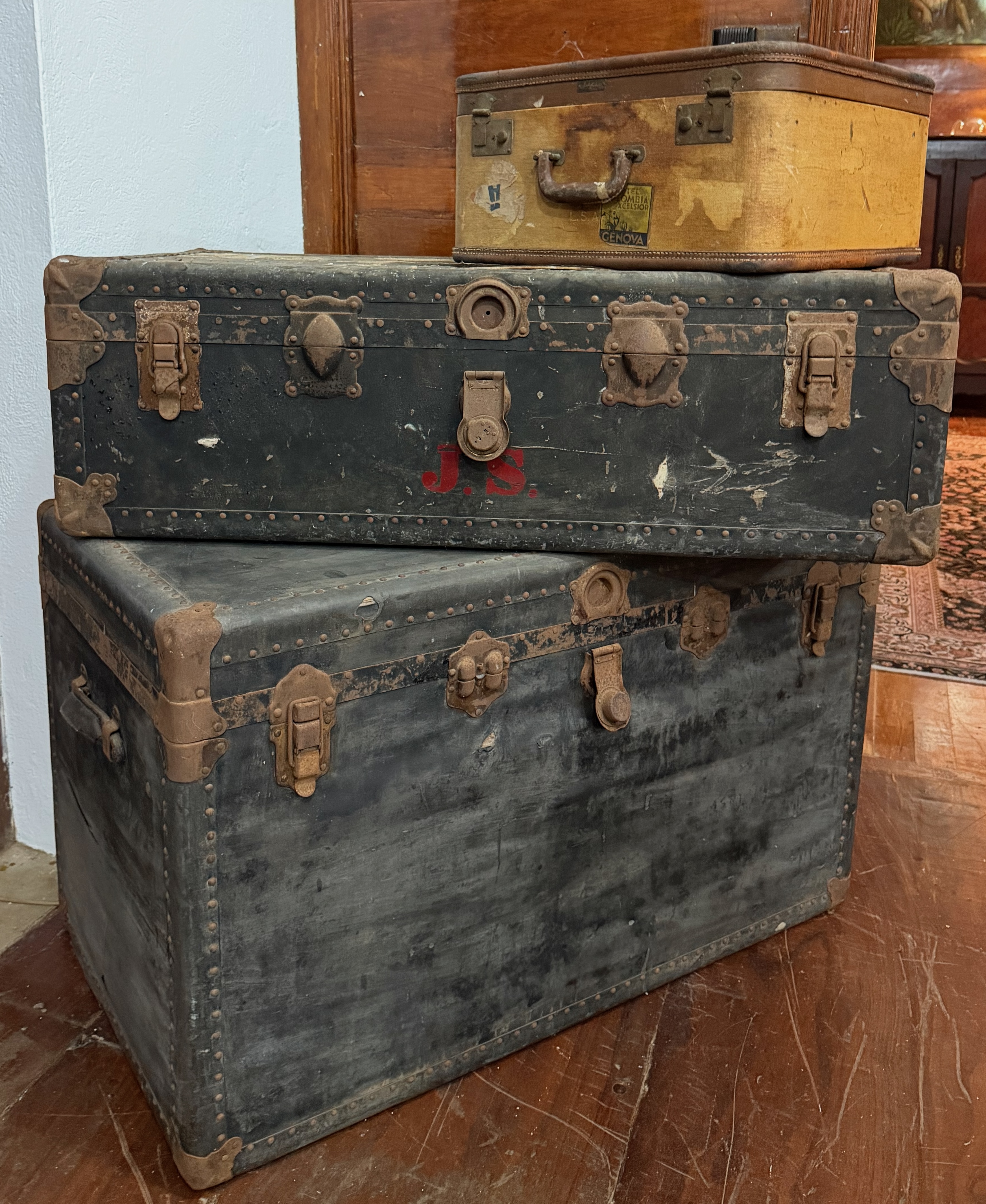
These travel trunks recall the journeys that brought John Dana Archbold and others to Springfield House — their belongings, research, and ideas crossing oceans to reach Dominica’s green heart.

A sturdy companion of letters and records, its steel keys once echoed the rhythm of Springfield’s daily correspondence.
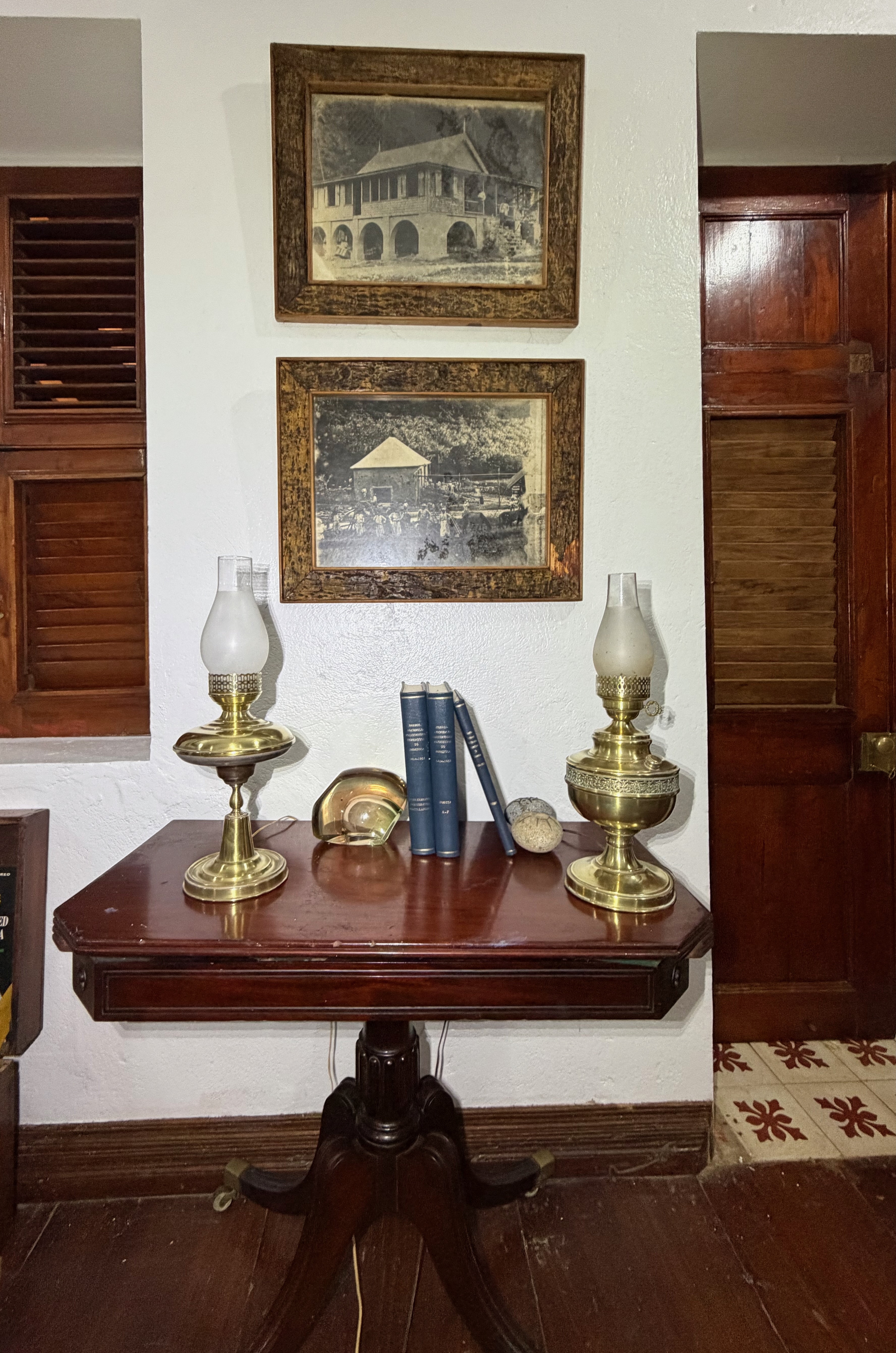
From oil to early electric light, these lamps brightened the evenings of writing, study, and quiet conversation.
Alongside historical furnishings, Archbold assembled numerous oil paintings by Dominican artists, including early works by Earl Etienne, as well as pieces by Darius, Louison, K. Royer, and others. These works depict traditional life, community scenes, and the island’s landscapes — forming a vivid portrait of Dominica’s culture and memory.
The story of Springfield also belongs to its people: Cecilia, Archbold’s personal chef; Desmond Eusell, lifelong caretaker of the estate; Mr. Bruno, former manager turned landowner in Sylvania; and Mrs. Alexander, who married here in 1998. Their lives and celebrations are part of Springfield’s enduring legacy of opportunity, resilience, and belonging.
Springfield’s story unfolds across decades — a journey of vision, resilience, and renewal.
Archbold purchases the Springfield property from the Bellot family.
Construction of Springfield House and its distinctive furnishings.
The house becomes a social hub for weddings, music events, and community gatherings.
Archbold donates a portion of the property to establish the Archbold Tropical Research Center (ATREC).
Hurricane Maria devastates Dominica, damaging Springfield but inspiring renewal.
Community-led restoration reopens Springfield House as a museum and nature walk for all.